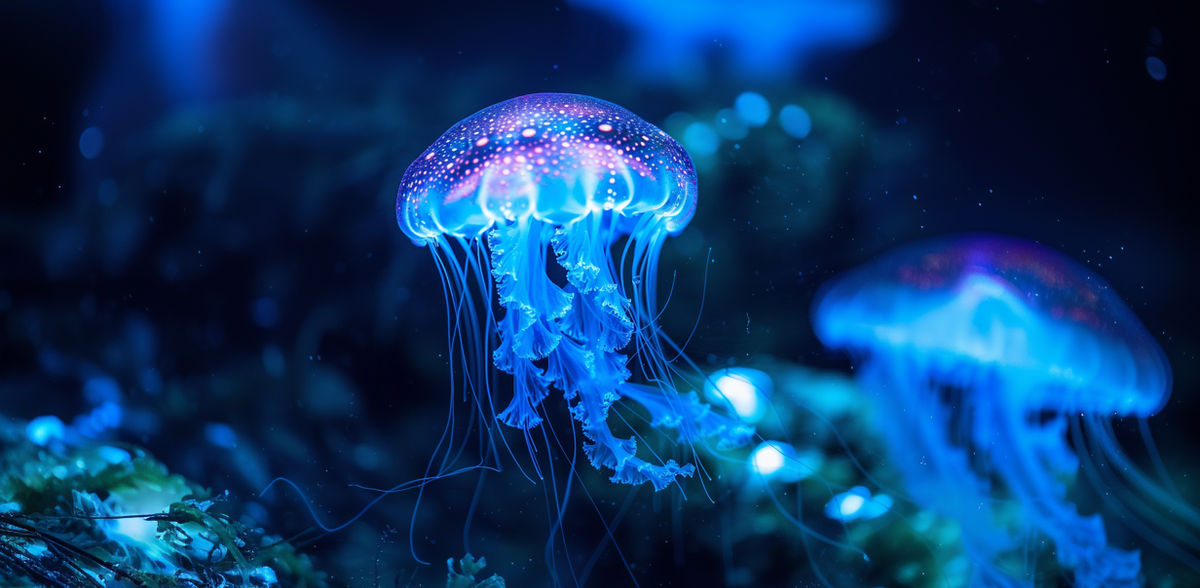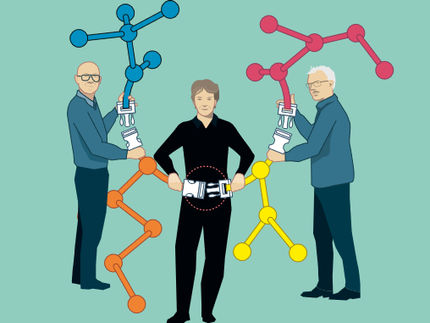Bioluminescence - the natural glow
How glowing molecules can also be used in industry
Many living organisms can glow in the dark. Researchers are already using this ability in medicine. A research team led by Prof. Dr. Stefan Schramm from HTWD is investigating how glowing molecules can also be used in industry.
Dresden, 17.04.2024 - Bioluminescence is the emission of light as a result of chemical reactions in living organisms. The phenomenon exists in over 3500 different species worldwide - whether fireflies in native meadows, bioluminescent fungi in the Brazilian rainforest or glowing squid, sharks and bacteria in the deep sea.
Bioluminescence has developed independently more than 50 times in evolution and fulfills a variety of different functions, for example it is used for communication, foraging and defense against enemies.However, the underlying chemistry in many different bioluminescent organisms is based on only a small number of chemical molecules. This is a remarkable example of convergent evolution, meaning that the organisms are not related to each other but use similar chemical reactions and molecules to produce light. The molecules are extremely efficient and help organisms to successfully survive and reproduce within evolution.
Researchers are already using this property in medicine - particularly in the bioanalytical and biomedical sector. As the light is generated within a chemical reaction, the method does not require any excitation light compared to similar technologies such as fluorescence. In combination with modern detectors, analytical detection limits in the single molecule range can be achieved. Such sensitivity is not possible with any other technique. Various research groups have therefore developed highly sensitive assays on this basis that enable the early diagnosis of diseases such as HIV, cancer and coronavirus.
In his article "Bioluminescence - The Vibrant Glow of Nature and its Chemical Mechanisms", recently published in the journal "ChemBioChem", Prof. Dr. Stefan Schramm, Professor of Applied Organic Chemistry at the Dresden University of Applied Sciences (HTWD), summarizes the current state of research. The aim of the review article is to provide researchers and students with an easy-to-understand introduction to the topic. It is based on two articles that appeared in German in "Chemie in unserer Zeit" in 2022 and 2023.
Inspired by nature for industrial application
In the future, Professor Schramm's team will investigate how natural molecules that have developed and optimized over more than 120 million years of evolution can be improved for use in organic electronics and photocatalysis. The idea is to develop so-called BiOLEMs (Biologically Inspired Organic Light Emitting Molecules). With their application, OLEDs (organic light-emitting diodes), for example, which are currently installed in billions of smartphones and contain toxic and very environmentally harmful heavy metal complexes, can be replaced by biological molecules that are purely organic and ideally also completely biodegradable in the environment.
The second field of application concerns photocatalysis, a key technology for promoting sustainability in the chemical industry. High-quality photocatalysts are required for efficient photocatalysis. Biologically inspired Organic Light Emitting Molecules (BiOLEMs) can also be used for this purpose.
Future of Teaching: the practice and theory of chemistry
Dr. Stefan Schramm has been teaching at the Faculty of Agriculture/Environment/Chemistry (LUC) at HTWD since March 2024. In his view, organic chemistry in particular offers students a fascinating and practical perspective. In the lecture "Organic chemistry based on renewable raw materials", for example, he discusses natural substances and their industrial use. Particular attention is paid to bioluminescence, chemiluminescence and organic light-emitting diodes, which inspire students with their impressive light phenomena and have a wide range of applications in the chemical industry. "These topics are not only instructive, but also open doors for students to companies in the bioanalytical field and to research institutions in Dresden and the surrounding area that deal with organic electronics," says Schramm.
























































